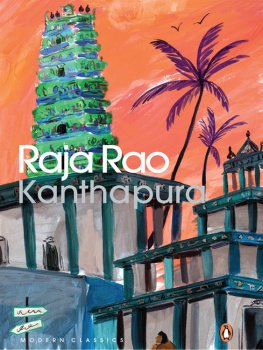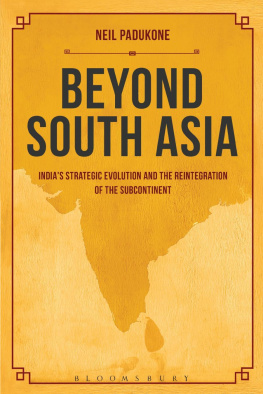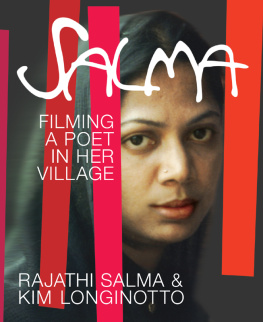Village Life
in
SOUTH
INDIA
Village Life
in
SOUTH
INDIA
Cultural Design and Environmental Variation
ALAN R. BEALS
First published 1974 by Transaction Publishers
Published 2017 by Routledge
2 Park Square, Milton Park, Abingdon, Oxon OX14 4RN
711 Third Avenue, New York, NY 10017, USA
Routledge is an imprint of the Taylor & Francis Group, an informa business
Copyright 1974 by Alan R. Beals
All rights reserved. No part of this book may be reprinted or reproduced or utilised in any form or by any electronic, mechanical, or other means, now known or hereafter invented, including photocopying and recording, or in any information storage or retrieval system, without permission in writing from the publishers.
Notice:
Product or corporate names may be trademarks or registered trademarks, and are used only for identification and explanation without intent to infringe.
Library of Congress Catalog Number: 2011030250
Library of Congress Cataloging-in-Publication Data
Beals, Alan R.
Village life in south India : cultural design and environmental variation / Alan R. Beals.
p. cm.
Includes index.
ISBN 978-1-4128-4273-0
1. Villages--India, South. I. Title.
HN683.B43 2011
307.76209548--dc23
2011030250
ISBN 13: 978-1-4128-4273-0 (pbk)
Contents
Foreword
Of the worlds major civilizations, the Indian is perhaps the most difficult for Westerners to comprehend. The formal structure of castes with their apparent fixity, the strong sense of hierarchy supported ritually by the concept of pollution, the religious belief in reincarnation as both a justification for ones present condition and as a motivation for proper conduct, are all alien to our way of thinking. The peculiarities of Indian culture have been known to the West since Megasthenes, the Greek emissary, wrote on India about 300 years B.C. Early Western descriptions, generalized and remote from daily realities, have exaggerated these differences rather than promoted understanding. Indian scholars, steeped in their own traditions and viewpoints, offering descriptions of the system as a theoretical and theological construct, have hardly been more helpful.
To understand how the Indian culture actually operates in the daily life of the ordinary person, it was necessary to have the detailed analyses of social anthropologists. Over the past four decades, many studies of Indian villages have shown us how life is actually conducted within their culturally defined universe. Yet its forms have still remained enigmatic, a seemingly inefficient way of organizing peasant society.
Alan Beals, by bringing an ecological approach to the examination of Indian rural life, shows us the functional effectiveness of these traditional institutions and demonstrates their adaptive flexibility. Beals portrays three communities he has studied intensively, to indicate both the consistencies and the variations in South Indian village life. He shows how caste interrelationships create a stable set of mutual obligations, how these are maintained by concepts of proper religiously sanctioned behavior, how the jati or sub-castes establish community bonds, and above all, how these various relationships and involvements alter under differing environmental circumstances.
There are two basic parameters to this environmental variation: the characteristics of the land from which sustenance is derived through the application of human effort, and the variant effects of urban centers, whether exercised through political power, economic involvement, or religious influence. Intra-village caste relationships, to take one important example, are shaped by these forces. They are patterned by such remote conceptsremote from the standpoint of caste theoryas the kinds of soil and the slope of the land. Thus, matters like farm production, animal husbandry, caste organization and the institutions of authority are seen to adjust to the conformation of the local terrain; the very shape of the Indian village, both literally as it can be mapped on the ground and figuratively as it is viewed in Indian thought, conforms to environmental pressures.
Beals not only demonstrates the functional effectiveness of social institutions, but gives us an appreciation of the Indian world view. As he says, the Indian viewpoint is more systems-oriented and ecological in its formulation than is the characteristic understanding of Western man. The Hindu sense of unity with nature provides a recognition of the integration of life that is only now taking prominence in our scientific thought with the advent of an ecological theory.
Worlds of Man is a series designed to further this ecological understanding, cast in a scientific rather than a theological mode. In so doing, we are perhaps bringing old verities into a modern frame of reference, for this is not the first of the native peoples described in this series who have shared an essentially ecological understanding of their world. The fact that such ecological perceptions are part of folk wisdom does not make it less important that they become central to anthropological understanding as well.
WALTER GOLDSCHMIDT
In his ancient treatise on the law, Baudhayana identified five characteristics which differentiated South Indian civilization from the societies that surrounded it: dining with persons not initiated into the diners caste or religious sect, dining with women, eating food kept overnight, marrying the daughter of a maternal uncle, and marrying the daughter of a paternal aunt. Although not all modern scholars regard South India as sufficiently different or sufficiently uniform to justify treating it independently of the rest of Indian civilization, most would acknowledge the existence of distinctive characteristics of the kind listed by Baudhayana. Often, South India is defined as a place where Dravidian languages, different from the Indo-Europen languages of northern India, are spoken.
South Indias civilization is old. King Solomon received shipments of peacocks and sandalwood from South India, and rice, peacocks, and sandalwod shipped to Babylon before the fifth century B.C. bore Dravidian names. There is evidence of trade between China and South India as early as 700 B.C. Roman coins unearthed in South India testify to the existence of direct or indirect trade with the Roman Empire. For two or three thousand years, cities have been built, art forms have developed, religions have grown and spread, and empires have flourished and collapsed in South India.
Throughout this time the foundation of South Indian civilization has been the rural village communitya cluster of mud, stone, and thatched buildings housing from 50 to 2,000 people and their cattle. Despite constant change, famine, war, epidemic, and flood, the rural community has maintained its cup of life unbroken through the centuries. The ancient gods, altered but still identifiable, still rule the village temple; the same bullocks pull the farmers plow; the same houses line the village streets; and the same aggressive, lively people described in ancient poems fill the village with their word and song, even though the song is now from the latest motion picture.
The South Indian village is one of the great, enduring works of humanity. Its passage through the shoals of time testifies to the success of South Indian civilization in managing the problems of survival. South Indians may at times have failed to cope with the stresses of their ever-changing environment. Vital resources may have been exhausted or destroyed. Thus far, however, the people have been able to remedy such mistakes and to maintain unbroken the relationships to the world around them that preserve the essence of their civilization as well as the environmental assets on which the continuation of their way of life depends.








